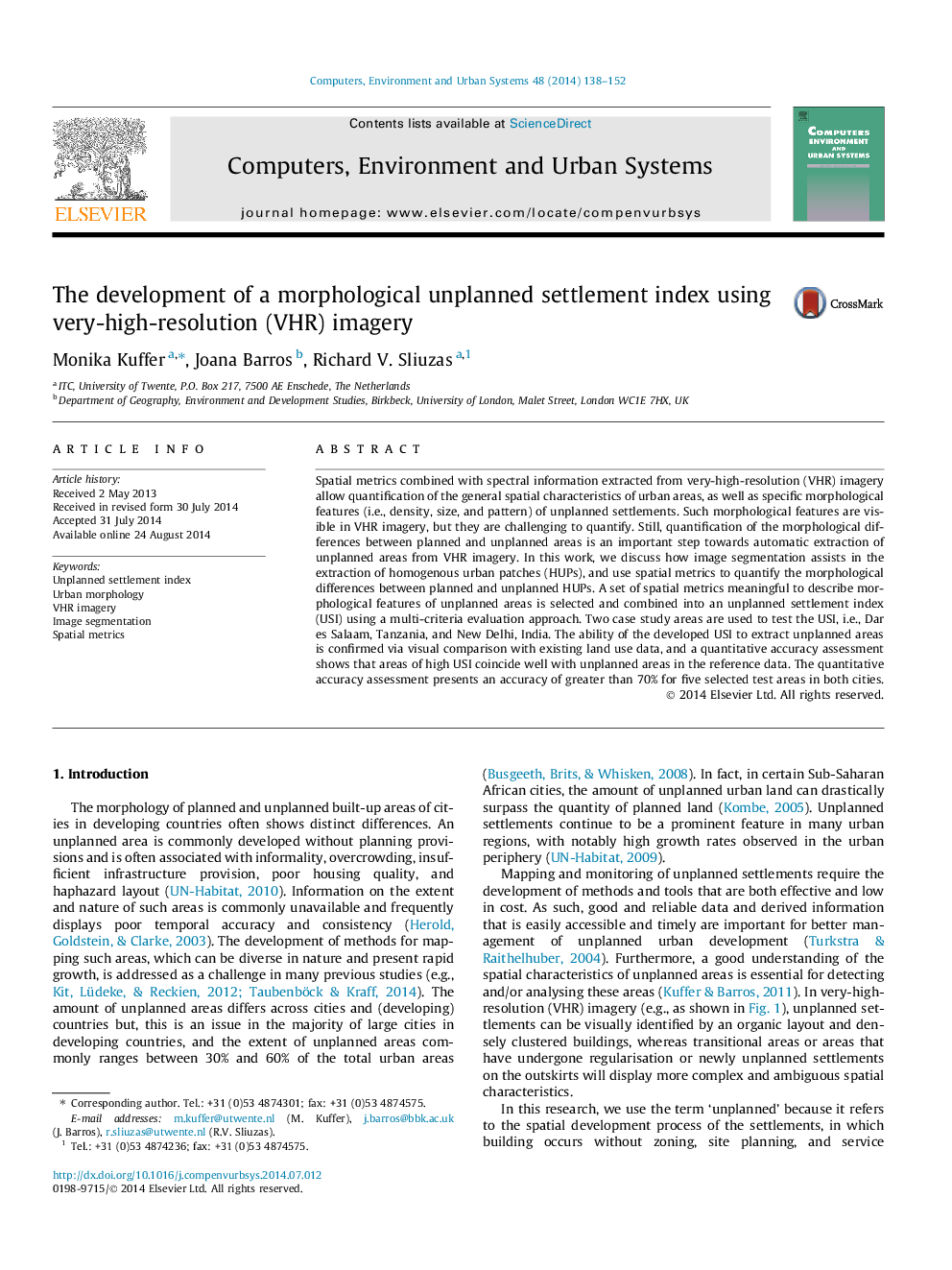| کد مقاله | کد نشریه | سال انتشار | مقاله انگلیسی | نسخه تمام متن |
|---|---|---|---|---|
| 506349 | 864896 | 2014 | 15 صفحه PDF | دانلود رایگان |
• Image segmentation is used to extract homogenous urban patches that reflect the morphology on ground.
• Morphological characteristics are used to select a set of spatial metrics that differentiate planned and unplanned areas.
• Selected spatial metrics are combined into an unplanned settlement index (USI) using a multi-criteria evaluation approach.
• The final index (USI) has the potential to indicate areas that have morphological characteristics of unplanned areas.
Spatial metrics combined with spectral information extracted from very-high-resolution (VHR) imagery allow quantification of the general spatial characteristics of urban areas, as well as specific morphological features (i.e., density, size, and pattern) of unplanned settlements. Such morphological features are visible in VHR imagery, but they are challenging to quantify. Still, quantification of the morphological differences between planned and unplanned areas is an important step towards automatic extraction of unplanned areas from VHR imagery. In this work, we discuss how image segmentation assists in the extraction of homogenous urban patches (HUPs), and use spatial metrics to quantify the morphological differences between planned and unplanned HUPs. A set of spatial metrics meaningful to describe morphological features of unplanned areas is selected and combined into an unplanned settlement index (USI) using a multi-criteria evaluation approach. Two case study areas are used to test the USI, i.e., Dar es Salaam, Tanzania, and New Delhi, India. The ability of the developed USI to extract unplanned areas is confirmed via visual comparison with existing land use data, and a quantitative accuracy assessment shows that areas of high USI coincide well with unplanned areas in the reference data. The quantitative accuracy assessment presents an accuracy of greater than 70% for five selected test areas in both cities.
Figure optionsDownload as PowerPoint slide
Journal: Computers, Environment and Urban Systems - Volume 48, November 2014, Pages 138–152
